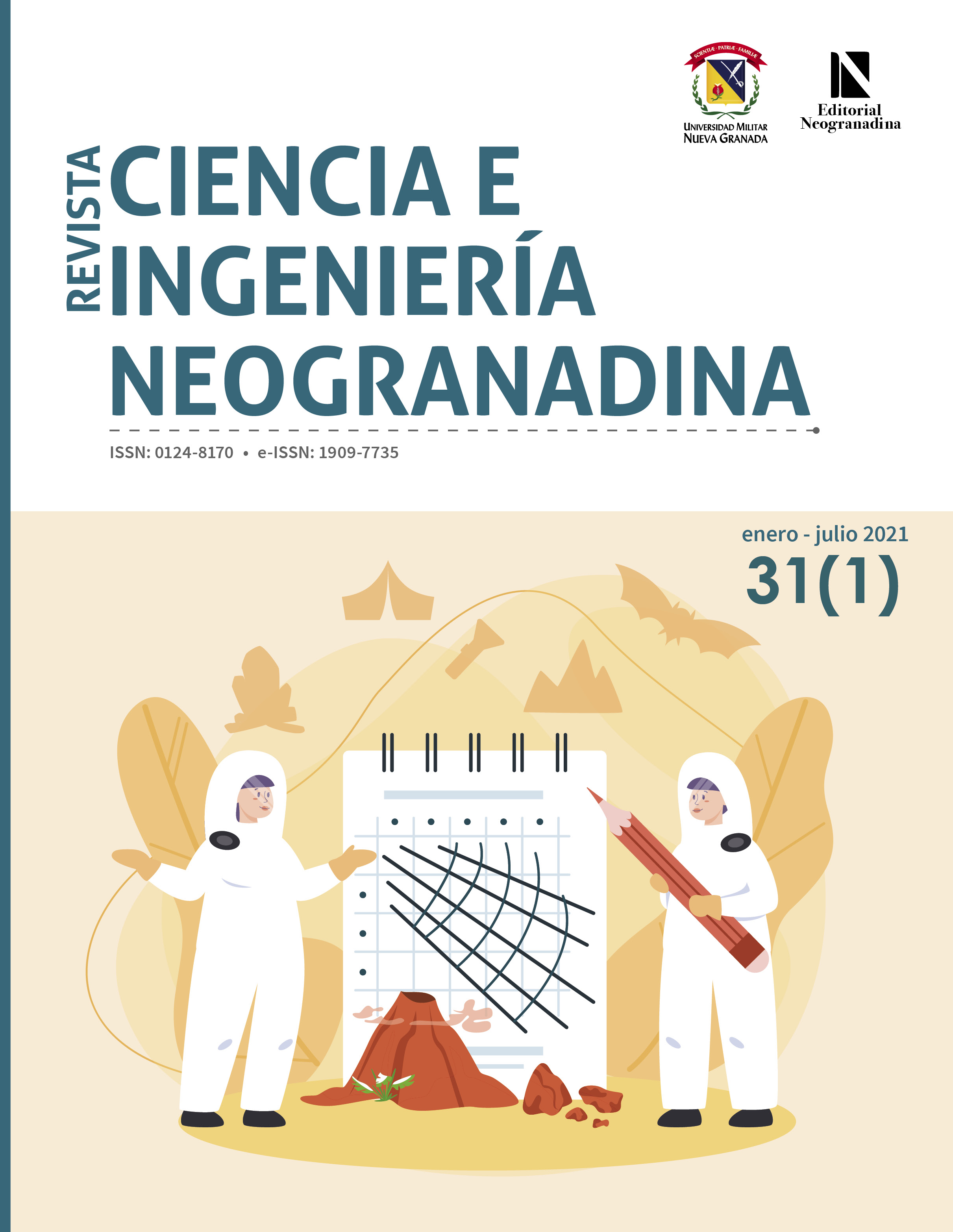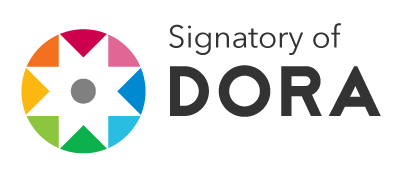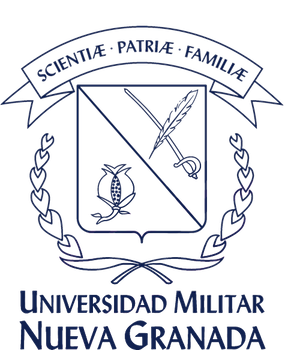Interpretación paleoambiental de los sedimentos del último milenio en la Ciénaga de Marriaga, Delta de Atrato, Colombia
Resumen
En este estudio se presenta la primera reconstrucción paleoambiental de los últimos 1130 años de la Ciénaga de Marriaga en el delta del río Atrato, en el noroeste de Colombia. Los análisis geoquímicos de un núcleo de sedimento de 220 cm recuperado en la ciénaga revelan episodios climáticos interesantes y cambios sedimentarios en el último milenio. Se dividió el núcleo en tres segmentos, según las características de los sedimentos, el contenido de carbono orgánico (CO) y las edades geológicas. Los registros muestran diferentes alternancias de períodos húmedos y secos, la productividad biológica, precipitación de carbonato, grado de meteorización y altas concentraciones de metales pesados. Los segmentos también coinciden con las diferencias geoquímicas determina- das por las relaciones (ZR+RB)/Sr, Ca/Ti Mn/Fe, CO/Ti, Mg/Ca Ba/Al, Sr/Al Ca/Al. La secuencia inferior (entre 1130 ± 90 a y 870 ± 70 a) muestra un período seco con inundaciones intermitentes y una alta producción de CO en condiciones subaéreas, seguida de un entorno más húmedo entre 870 ± 70 años y 530 ± 40 años, con agotamiento de las proporciones de oligoelementos y CO. El período más reciente (530 ± 40 a al presente) evidencia un ambiente dominado por el régimen fluvial, basado en una relación Ca/Al más baja y un aumento de CO. Las correlaciones estadísticas muestran tres gru- pos principales que distinguen entre la productividad biológica orgánica, los componentes de la roca madre y los aportes de metales pesados.
Descargas
Referencias bibliográficas
S. Lojen and N. Williams, “Geochemical and mineralogical characterization of sediments from Lake Futalaufquen (42.8°S, Andean Patagonia) to evaluate their potential as paleoclimatic proxies,” Quat. Res., vol. 98, pp. 1–18, 2020. https://doi.org/10.1017/qua.2020.34
A. K. M. Hasberg et al., “Modern sedimentation processes in Lake Towuti, Indonesia, revealed by the composition of surface sediments,” Sedimentology, vol. 66, no. 2, pp. 675–698, 2019. https://doi.org/10.1111/sed.12503
X. Zhang, D. E. Walling, X. He, and Y. Long, “Use of landslide-dammed lake deposits and pollen tracing techniques to investigate the erosional response of a small drainage basin in the Loess Plateau, China, to land use change during the late 16th century,” Catena, vol. 79, no. 3, pp. 205–213, 2009. http://dx.doi.org/10.1177/0959683615574584
I. Matthias and T. Giesecke, “Insights into pollen source area, transport and deposition from modern pollen accumulation rates in lake sediments,” Quat. Sci. Rev., vol. 87, pp. 12–23, 2014. http://doi.org/10.1016/j.quascirev.2013.12.015
H. Sakai, R. Fujii, M. Sugimoto, R. Setoguchi, and M. Paudel, “Two times lowering of lake water at around 48 and 38 ka, caused by possible earthquakes, recorded in the Paleo-Kathmandu lake, central Nepal Himalaya,” Earth Planets Space, vol. 68, no. 1. pp. 1–10, 2016. https://doi.org/10.1007/s11368-019-02420-5
A. E. Self et al., “The relative influences of climate and volcanic activity on Holocene lake development inferred from a mountain lake in central Kamchatka,” Glob. Planet. Chang., vol. 134, pp. 67–81, 2015. https://doi.org/10.1016/j.sedgeo.2006.04.006
J. P. Corella et al., “Sediment dynamics in the subaquatic channel of the Rhone delta (Lake Geneva, France/Switzerland),” Aquat. Sci., vol. 76, no. S1, pp. 73–87, 2014. https://doi.org/10.1007/s00027-013-0309-4
F. Ocakoğlu et al., “A 2800-year multi-proxy sedimentary record of climate change from Lake Çubuk (Göynük, Bolu, NW Anatolia),” Holocene, vol. 26, no. 2, pp. 205–221, 2016. https://doi.org/10.1177/0959683615596818
M. L. Carrevedo et al., “A 700-year record of climate and environmental change from a high Andean lake: Laguna del Maule, central Chile (36°S),” Holocene, vol. 25, no. 6, pp. 956–972, 2015. https://doi.org/10.1177/0959683615574584
M. S. Tonello et al., “Geochemistry and mineralogy of southwestern Lake Superior sediments with an emphasis on phosphorus lability,” J. Soils Sediments, vol. 20, no. 2, pp. 1060-1073, 2020. https://doi.org/10.1007/s11368-019-02420-5
N. Fagel, E. Thamó-bózsó, and B. Heim, “Mineralogical signatures of Lake Baikal sediments: Sources of sediment supplies through Late Quaternary,” Sediment. Geol., vol. 194, no. 1-2, pp. 37–59, 2007. https://doi.org/10.1016/j.sedgeo.2006.04.006
S. Purnawan, I. Setiawan, and Z. A. Muchlisin, “Sediment grain-size distribution in the Lake Laut Tawar, Aceh Province, Indonesia,” Aquac. Aquarium, Conserv. Legis. Int. J. Bioflux Soc., vol. 8, no. 3, pp. 404–410, 2015. http://www.bioflux.com.ro/aacl
J. D. Correa, “Calidad del agua en humedales del plano de inundación del río Atrato,” Rev. Cienc. Ambient. Sostenibilidad cas, vol. 1, no. 1, pp. 93–109, 2014.
A. F. Rúa Cardona, M. T. Flórez Molina, and J. P. Baena, “Variación espacial y temporal en los contenidos de mercurio, plomo, cromo y materia orgánica en sedimento del complejo de humedales de Ayapel, Córdoba, noroccidente colombiano,” Rev. Fac. Ing., no. 69, pp. 244–255, 2013.
G. Bernal and J. Betancur, “Sedimentología de las lagunas costeras: Ciénaga Grande de Santa Marta y Ciénaga de Pajarales,” Bol. Investig. Mar. Costeras, vol. 25, pp. 49–76, 1996. https://doi.org/10.25268/bimc.invemar.1996.25.0.370
J. D. Restrepo and S. A. López, “Morphodynamics of the Pacific and Caribbean deltas of Colombia, South America,” South Am. Earth Sci., vol. 25, no. 1, pp. 1–21, 2008. https://doi.org/10.1016/j.jsames.2007.09.002
G. Poveda, “La hidroclimatología de Colombia: una síntesis desde la escala inter-decadal hasta la escala diurna,” Rev. Acad. Colomb. Cienc. Exactas Fís. Nat., vol. 28, no. 107, pp. 201–222, 2004.
Y. Thomas, M. Cesaraccio, C. García, and L. Ménanteau, “Contribución de la hidrografía histórica al estudio de la cinemática de los fondos marinos: evolución del golfo de Urabá, Colombia,” Bolet.Cientif. cioh, vol. 25, pp. 110–119, 2007.
G. Rodríguez and G. Zapata, “Características del plutonismo Mioceno Superior en el segmento norte de la Cordillera Occidental e implicaciones tectónicas en el modelo geológico del Noroccidente colombiano,” Bolet. Cienc. Tierra, no. 31, pp. 5–22, 2012. https://revistas.unal.edu.co/index.php/rbct/article/view/31250
E. Lugo, R. Rodríguez, and G. Domínguez, “Prospección Geológica y Geoquímica Regional en el Área de Mandé,” Ingeominas, Bogotá, Colombia, Inf. Tecn. , 2003.
G. Bedoya et al., “Inventario, compilación, interpretación y evaluación integral de la información geológica, geofísica y geoquímica de lIIa cuenca Atrato y cuenca San Juan,” anh, Bogotá, Colombia, Inf. Técn. , 2007.
H. Gonzalez, Investigación Integral del Andén Pacífico Colombiano. Tomo 1 Geología, Bogotá, Colombia: igac-Ingeominas, 2001.
L. Betancurth, F. Preusser, D. Mueller, C. Rambeau, and J. Cañón. “First luminescence chronology of late Holocene deposits of the tropical Atrato Delta, Colombia,” J. South Am. Earth Sci., vol. 104, p. 102813, 2020. https://doi.org/10.1016/j.jsames.2020.102813
C. Martin-Puertas et al., “Geochemical processes in a Mediterranean Lake: a high-resolution study of the last 4,000 years in Zoñar Lake, southern Spain,” J. Paleolimnol., vol. 46, no. 3, pp. 405-421, 2011. https://doi.org/10.1007/s10933-009-9373-0
M. Carbonell Ventura, A. Navarro Flores, and Borrell Ruscalleda, “Heavy metals contamination and seawater intrusion in the northeastern of delta river Foix (Barcelona),” Bolet. Geolog. y Min., pp. 1–24, 2014.
R. M. Joeckel and B. A. Clement, “Surface features of the Salt Basin of Lancaster County, Nebraska,” Catena, vol. 34, no. 3–4, pp. 243–275, 1999. https://doi.org/10.1016/S0341-8162(98)00114-3
M. Haberzettl et al., “Lateglacial and Holocene wet-dry cycles in southern Patagonia: chronology, sedimentology and geochemistry of a lacustrine record from Laguna Potrok Aike, Argentina,” Holocene, vol. 17, no. 3, pp. 297–310, 2007. https://doi.org/10.1177/0959683607076437
J. Ridgway, N. Breward, W. J. Langston, R. Lister, J. G. Rees, and S. M. Rowlatt, “Distinguishing between natural and anthropogenic sources of metals entering the Irish Sea,” Appl. Geochemistry, vol. 18, no. 2, pp. 283–309, 2003. https://doi.org/10.1016/S0883-2927(02)00126-9
P. Negrel, “Multi-element Chemistry of Loire Estuary Sediments: Anthropogenic vs. Natural Sources,” Estuar. Coast. Shelf Sci., vol. 44, no. 4, pp. 395–410, 1997. https://doi.org/10.1006/ecss.1996.0139
Y. Palacios-Torres, K. Caballero-Gallardo, and J. Olivero-Verbel, “Mercury pollution by gold mining in a global biodiversity hotspot, the Choco biogeographic region,” Chemosphere, vol. 193, pp. 421–430, 2018. https://doi.org/10.1016/j.chemosphere.2017.10.160
S. M. Mclennan, “Relationships between the trace elements composition of sedimentary rocks and upper continental crust,” Geochem. GeophyGeosy., vol. 2, no. 4, pp. 1–24, 2001. https://doi.org/10.1029/2000GC000109
K. H. Wedepohl, “The composition of the continental crust,” Geochim. Cosmochim. Acta, vol. 59, no. 7, pp. 1217–1232, 1995. https://doi.org/10.1016/0016-7037(95)00038-2
E. Parra, “Potencial de recursos del subsuelo en la cordillera occidental zona Norte, fase 0,” Ingeominas, Bogotá, Colombia, Inf. Tecn. , 2006.
M. A. H. Bhuiyan, M. J. J. Rahman, S. B. Dampare, and S. Suzuki, “Provenance, tectonics and source weathering of modern fluvial sediments of the Brahmaputra-Jamuna River, Bangladesh: Inference from geochemistry,” J. Geochemical Explor., vol. 111, no. 3, pp. 113–137, 2011. https://doi.org/10.1016/j.gexplo.2011.06.008
L. Bénat-Tachot, “Santa María la Antigua del Darién: chronique d’une infortune locale,” e-Spania, no. 2006, pp. 12–32, 2015. https://doi.org/10.4000/e- spania.25105
D. Meunier, A. Caner, L. Hubert, F. El Albani, and A. Pret, “The weathering intensity scale (wis): an alternative approach of the chemical index of alteration (cia),” Am. J. Sci., vol. 313, no. 2, pp. 113–143, 2013. https://doi.org/10.2475/02.2013.03
G. E. Qian, X. U. E. Z. George, Y. E. Liming, and X. U. Dong, “Distribution Patterns of Major and Trace Elements and Provenance of Surface Sediments on the Continental Shelf off Western Guangdong Province and Northeastern Hainan Island,” J. Ocean Univ. China, vol. 18, no. 4, pp. 1–10, 2019. https://doi.org/10.1007/s11802-019-3738-4
K. Goldberg and M. Humayun, “The applicability of the Chemical Index of Alteration as a paleoclimatic indicator: An example from the Permian of the Paraná Basin, Brazil,” Palaeogeogr. Palaeoclimatol. Palaeoecol., vol. 293, no. 1–2, pp. 175–183, 2010. https://doi.org/10.1016/j.palaeo.2010.05.015
G. M. Nesbitt and H. W. Young, “Early Proterozoic climates and plate motions inferred from major element chemistry of lutites,” Nature, vol. 299, no. 5885, pp. 715–717, 1982. https://doi.org/10.1038/299715a0
S. O. Oni and A. S. Olatunji, “Depositional environments signatures, maturity and source weathering of Niger Delta sediments from an oil well in southeastern Delta State, Nigeria,” Eurasian J. Soil Sci., vol. 6, no. 3, pp. 259–274, 2017. https://doi.org/10.18393/ejss.297245
L. Harnois, “The ciw index: A new chemical index of weathering,” Sediment. Geol., vol. 55, no. 3-4, pp. 319–322, 1988. https://doi.org/10.1016/0037-0738(88)90137-6
C. Vélez- Agudelo and N. Aguirre-Ramírez, “Influencia del río Atrato en el golfo de Urabá durante el holoceno tardío, mar caribe colombiano,” Bol. Investig. Mar. Costeras, vol. 45, no. 1, pp. 73–97, 2016. https://doi.org/10.25268/bimc.invemar.2016.45.1.631
A. Rua, G. Liebezeit, R. Molina, and J. Palacio, “Unmixing Progradational Sediments in a Southwestern Caribbean Gulf through Late Holocene: Backwash of Low-Level Atmospheric Jets,” J. Coast. Res., vol. 32, no. 2, pp. 397–408, 2015. https://doi.org/10.2112/JCOASTRES-D-14-00216.1
R. J. Smith and F. E. Mayle, “Impact of mid to late Holocene precipitation changes on vegetation across lowland tropical South America: a paleo-data synthesis,” Quat. Res., vol. 89, no. 1, pp. 1–22, 2017. https://doi.org/10.1017/qua.2017.89
S. Sachs, J. P. Sachse, D. Smittenberg, R. H. Zhang, Z. Battisti, D. S., and Golubic, “Southward movement of the Pacific intertropical convergence zone AD 1400–1850,” Nat. Geosci., vol. 2, no. 7, pp. 519–525, 2009. https://doi.org/10.1038/ngeo554
A. Jerardino, “Late Holocene Neoglacial episodes in southern South America and southern Africa: comparison,” Holocene, vol. 5, no. 3, pp. 361–368, 1995. https://doi.org/10.1177/095968369500500313
N. Tribovillard, T. J. Algeo, T. Lyons , and A. Riboulleau, “Trace metals as paleoredox and paleoproductivity proxies: an update,” Chem. Geol., vol 232, no. 1-2, pp. 12–32, 2006. https://doi.org/10.1016/j.chemgeo.2006.02.012












